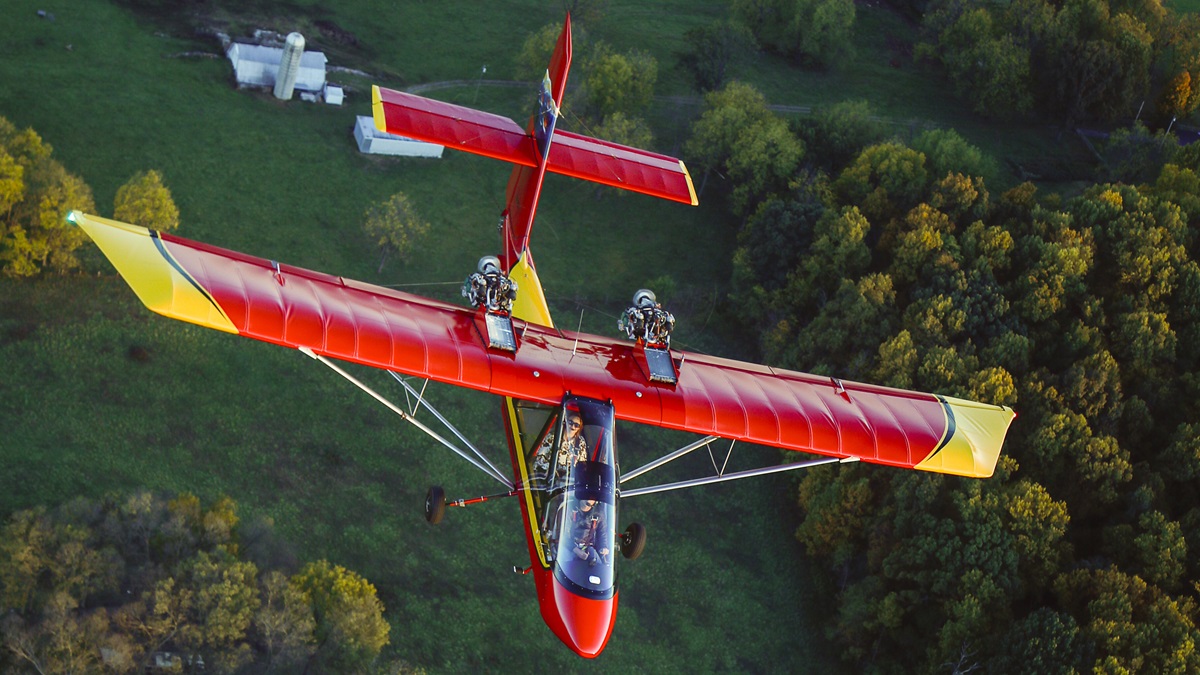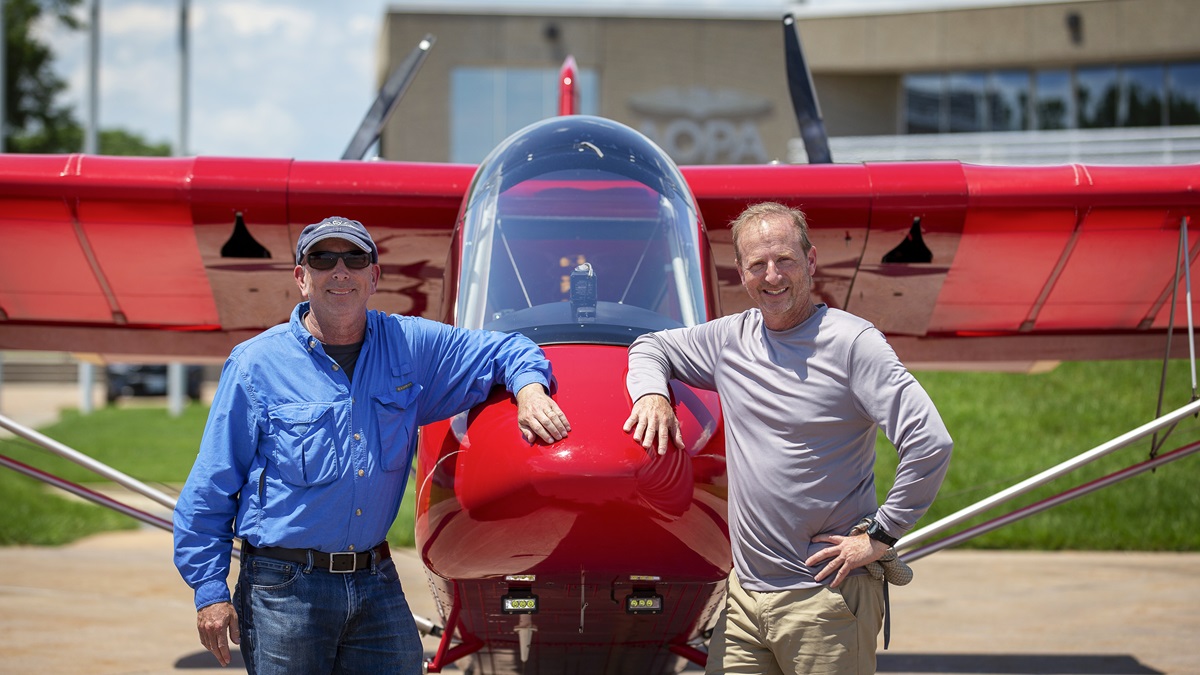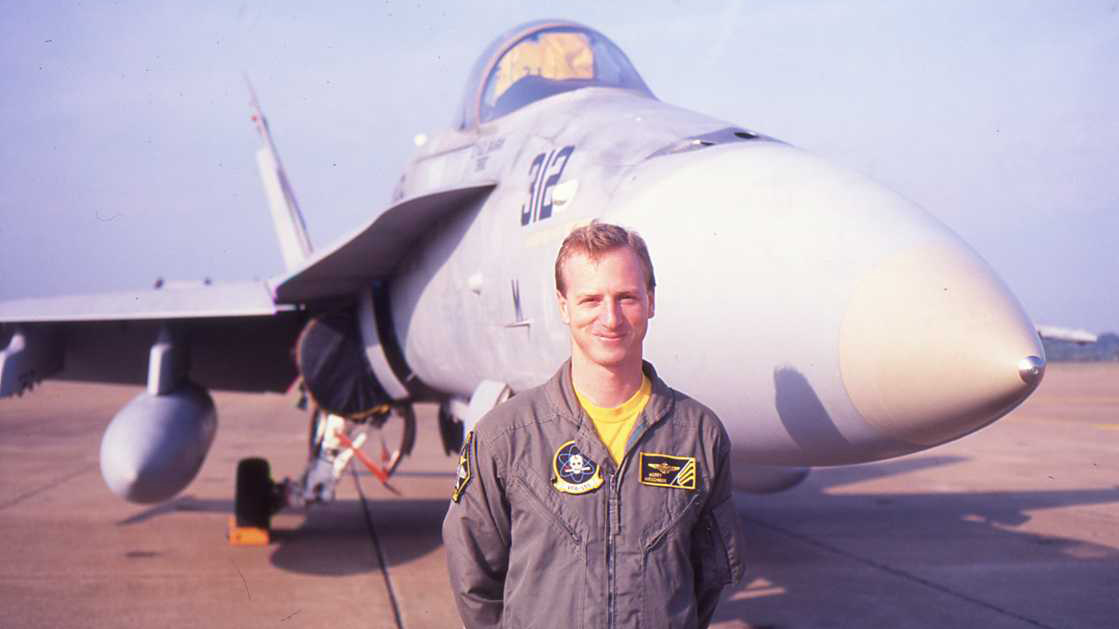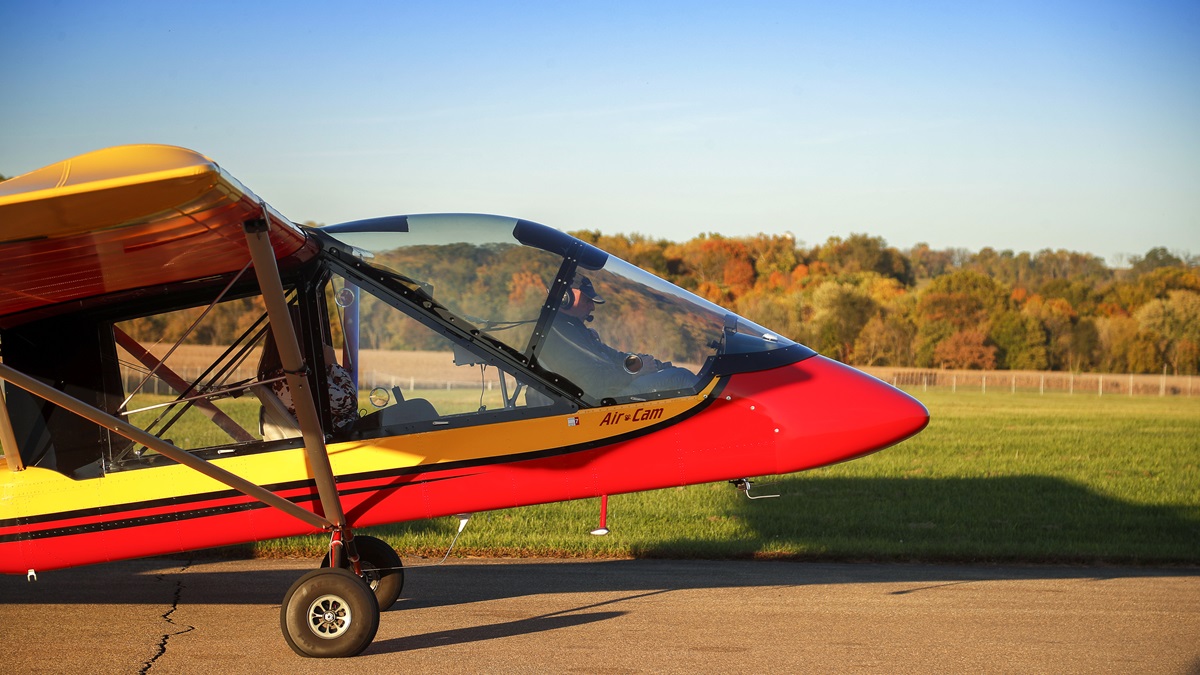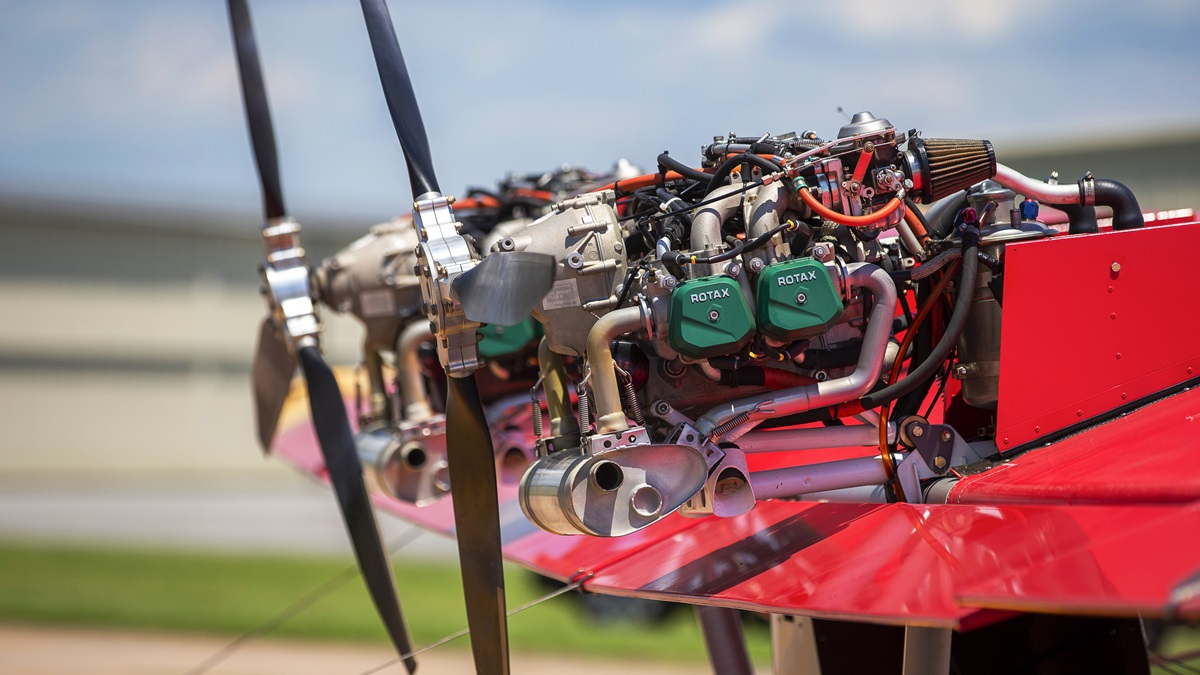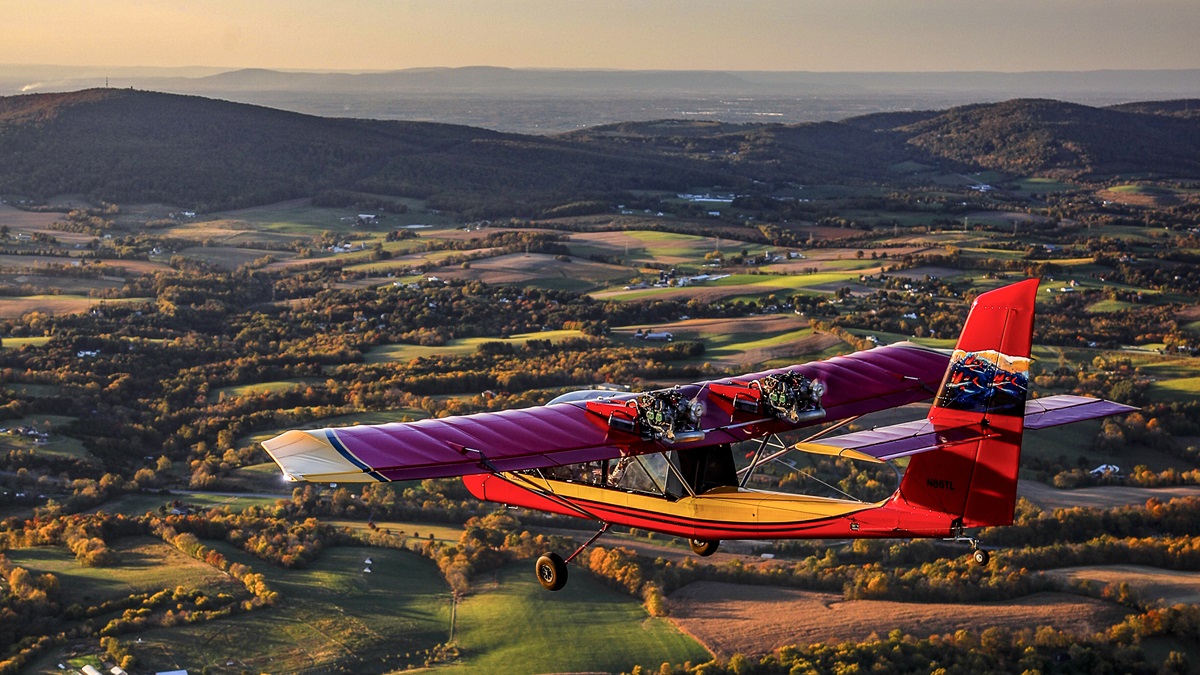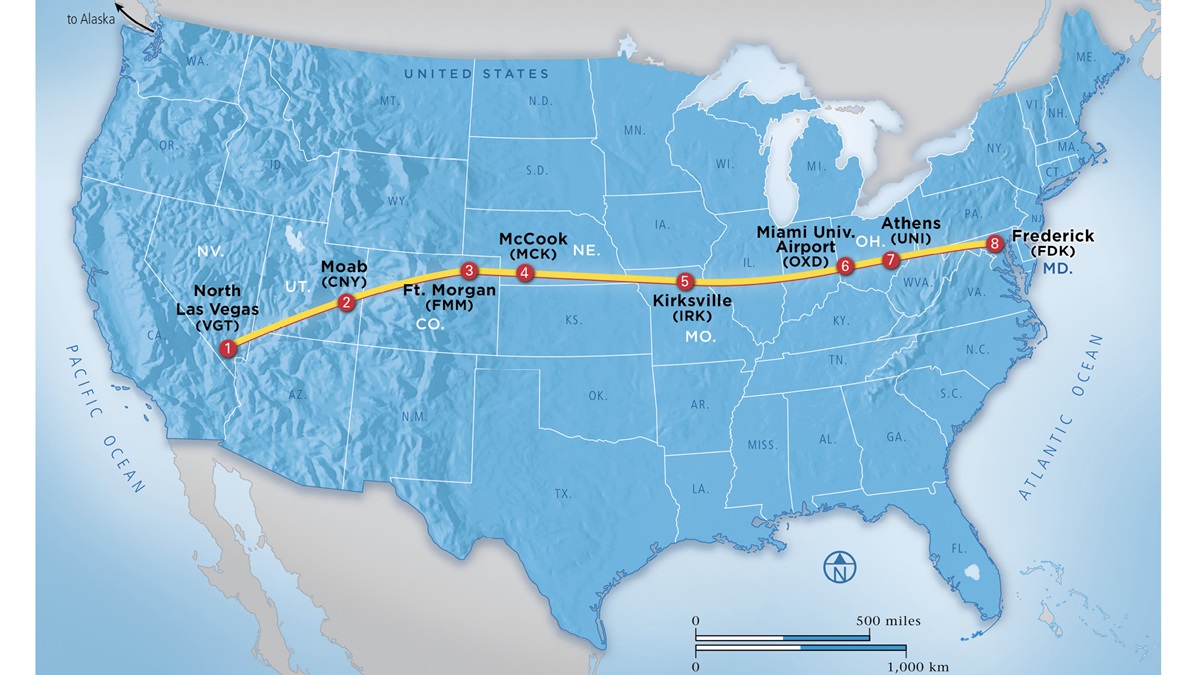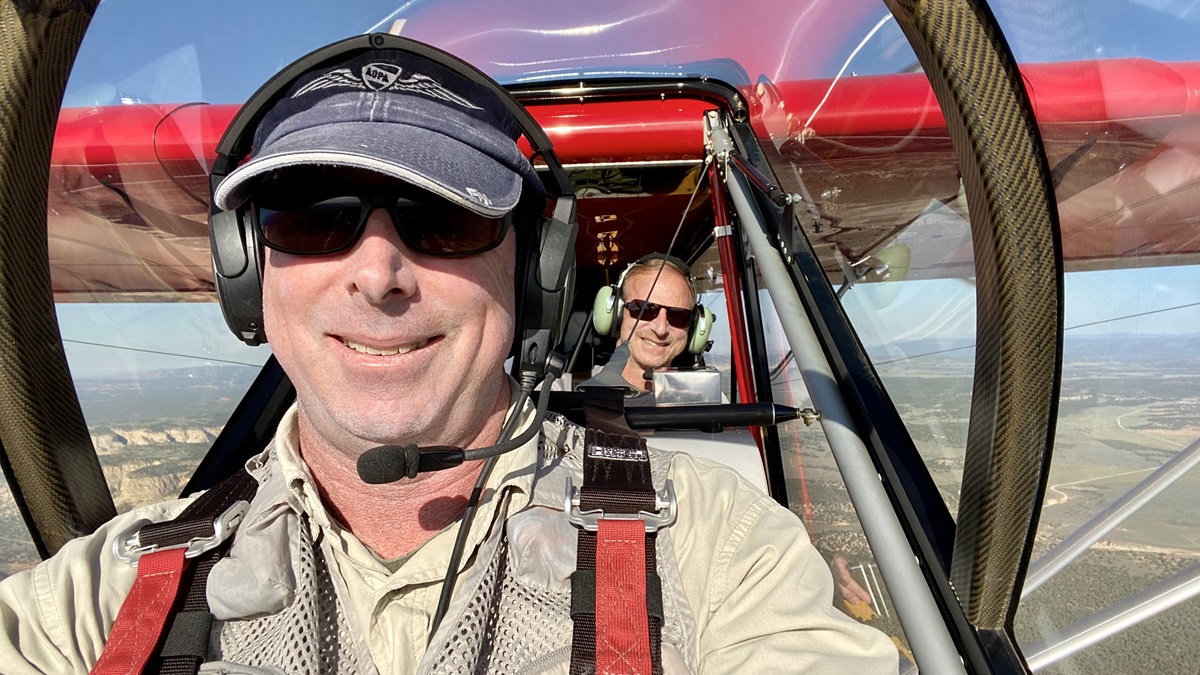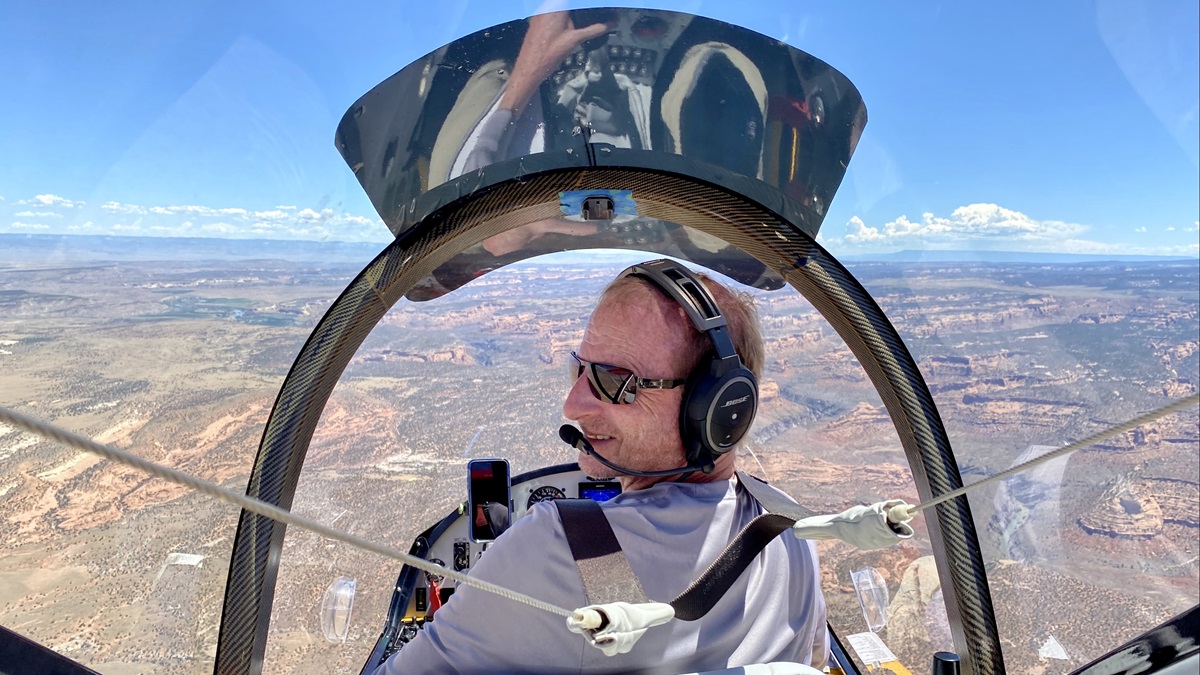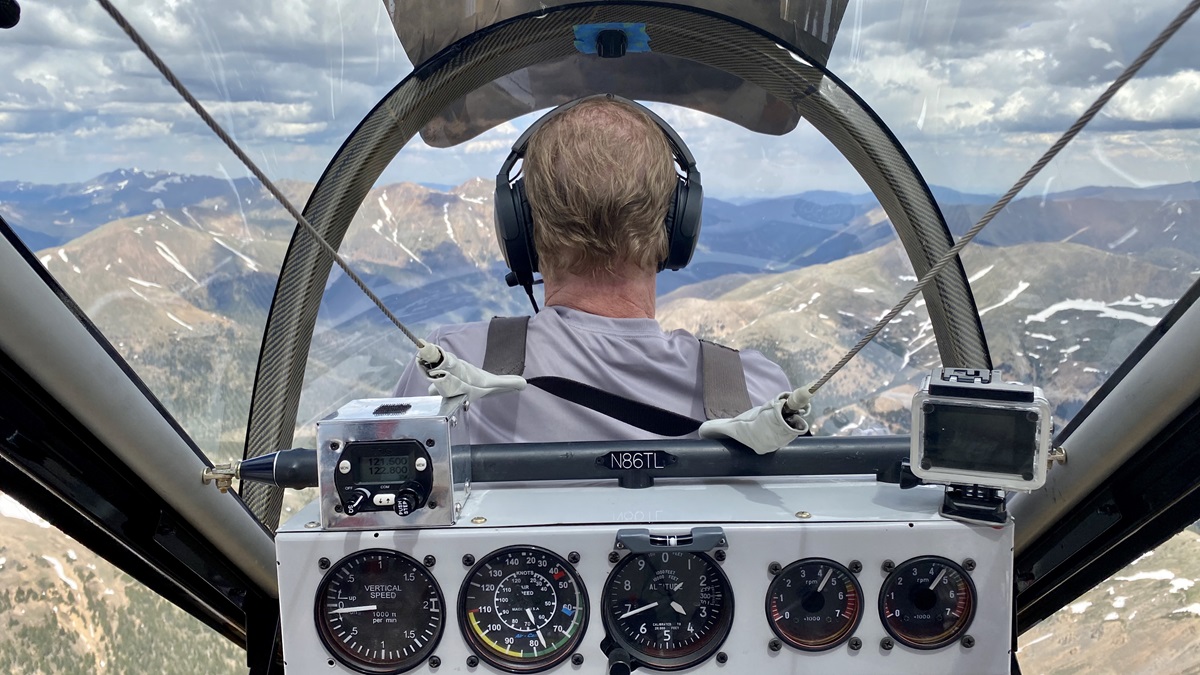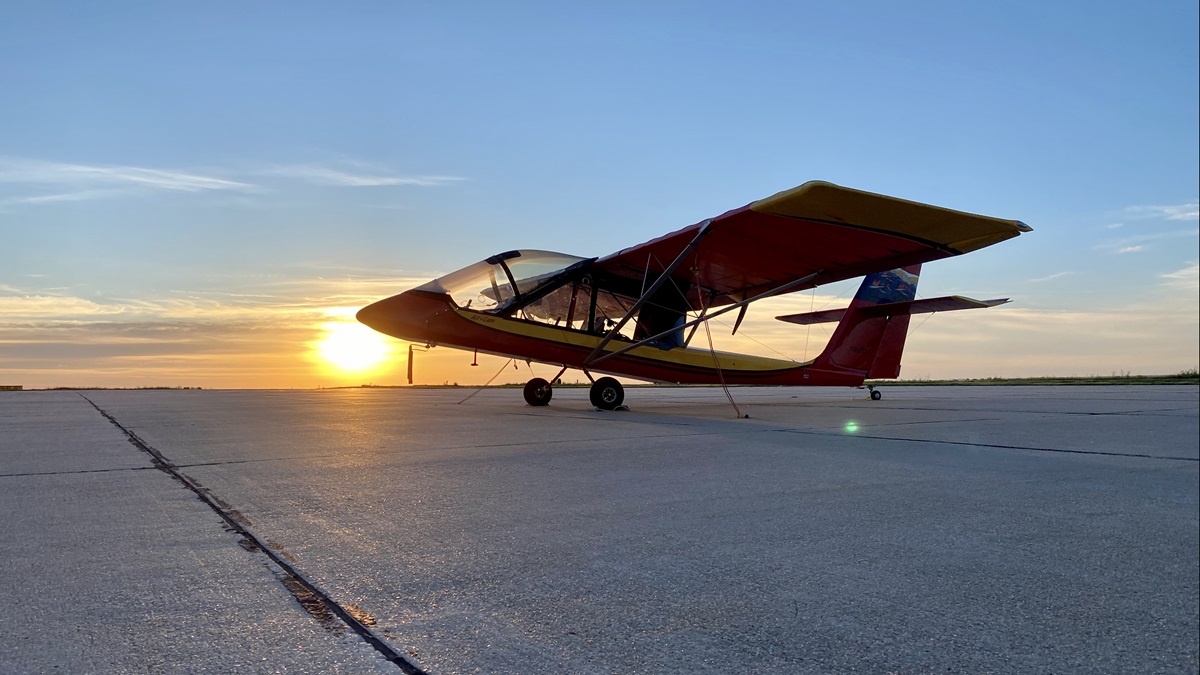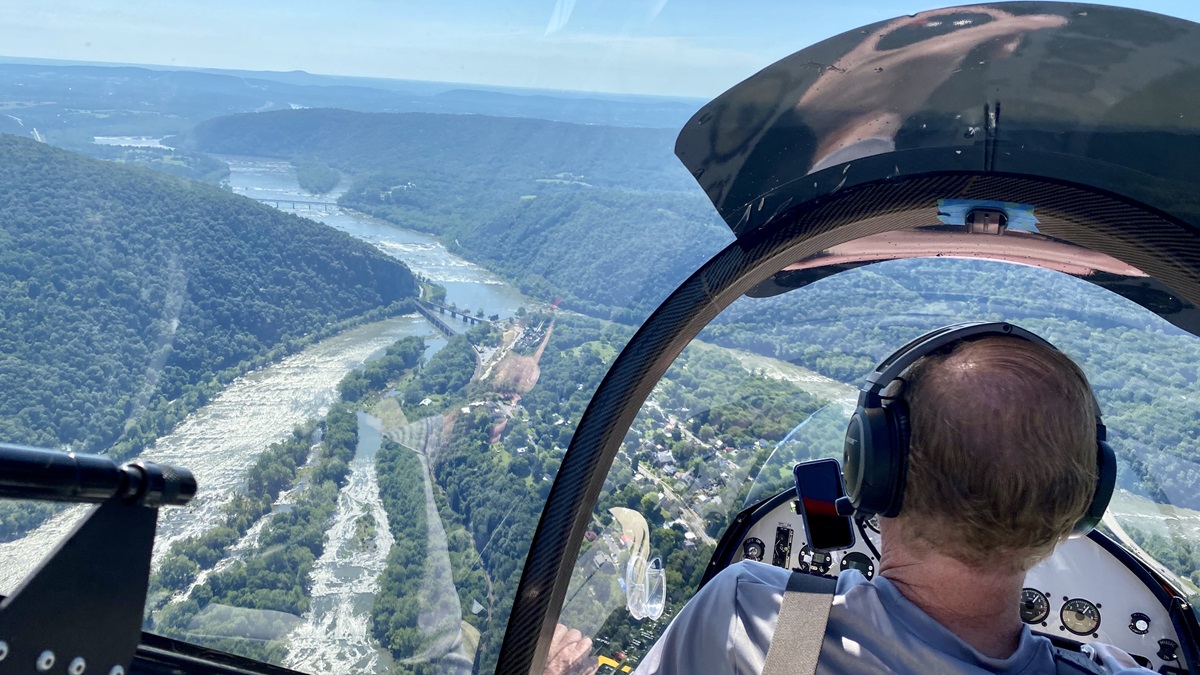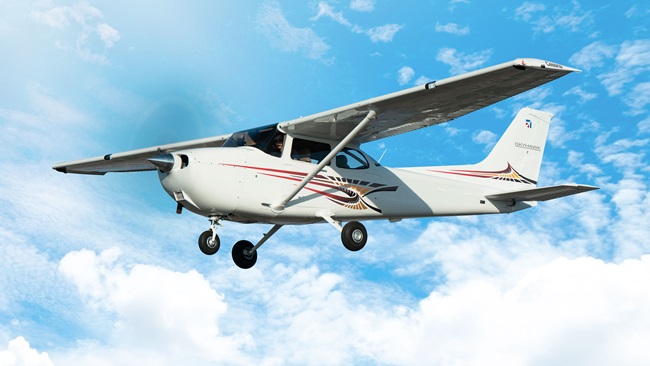A good guy to have around
Two brothers, an AirCam, and a continent to cross
Taking off from North Las Vegas Airport in the pink light of dawn—before the summer heat had a chance to build, or the control tower opened—we slid north under the Class B airspace, then hugged the mountainsides as we entered the barren, rock-strewn valleys to the northeast.
“Are we flying or levitating?” my brother Harry asked with amusement from the back seat of the AirCam, the twin-engine, two-seat observation airplane that we’d spend the next few days ferrying to the East Coast. “This feels more like riding in an elevator than an airplane.”
Harry and I are the two middle brothers in a brood of four. We walk the same, talk the same, and share a fascination with flying—yet our aviation paths couldn’t be more different.
Harry was the pilot prodigy in our family. He was the golden boy who soloed on his sixteenth birthday, worked as a flight instructor during college at UCLA, joined the U.S. Navy, and flew F/A–18 Hornets for a decade. Then Crohn’s disease, a chronic autoimmune disorder, ended his military flying career. He was deeply disappointed but quickly applied himself to new pursuits. He went back to school for a master’s degree in business, started a family, and then worked for a series of fast-paced Silicon Valley startups.
He put jets aside and had a partnership in a single-seat Yak 50, a Russian aerobatic airplane, but he never flew professionally. He just wanted to pull Gs, fly in formation with friends, and dogfight with other mostly former fighter pilots like himself.
I’m a purely civilian pilot, learned to fly in my mid-20s, and was drawn to all the impractical stuff: aerobatics, historical airplanes, and tailwheels. I worked as a journalist and flew for recreation and personal challenge, and I frankly never anticipated that I’d ever have the chance to work in aviation.
Recently, however, Harry stepped away from the corporate world and jumped back into full-time flying. At age 54, he renewed his long-lapsed flight instructor certificate, added some new ratings, and started teaching. He planned to pursue a jet type rating or two—just as the global pandemic hit and demand for pilots imploded.
So, when I had an opportunity to ferry an AirCam from Nevada to Maryland, Harry—for once—was available to come along. I had to let him know at the start, however, that this trip would be especially challenging.
The AirCam is a sensory feast to fly because of its limitless view, and its twin-engine design allows it to safely explore remote regions. But it’s achingly slow—about 70 knots in cruise—and light wing loading makes it feel like a cork on the ocean in turbulence. It’s drafty and cold in the winter, especially in the rear seat, and blazing hot in summer.
Also, this particular airplane’s transponder and ADS-B transmitter were inoperative, so we couldn’t get VFR flight following, transit or overfly Class B or C airspace, or appear at all on air traffic control radar. (Authorizations were required to leave terminal airspace at the beginning of the journey, and enter it at trip’s end.)
Harry dismissed those limitations with a shrug.
“We’ll fly at low altitudes where we’re unlikely to encounter other airplanes and keep a sharp lookout,” he said. “You’ve flown these routes—but you’ve never done it in such good company.”
A grueling pace
I flew the first leg out of Las Vegas to demonstrate the AirCam’s unique traits, and I described them to Harry along the way. Harry would fly up front on the next leg—and we’d alternate the rest of the way across the continent.
From Las Vegas, we overflew Zion National Park, and the Canyonlands, all the way to Moab, Utah—a 4.5-hour flight made possible by a 12-gallon auxiliary fuel tank. Flight conditions were sublime with smooth air and unlimited visibility.
Next, Harry took over for what turned out to be the most difficult portion of the trip: crossing the Rockies and the Continental Divide on a route that took us by the ski resorts at Vail and Aspen, Colorado.
Surface winds were mercifully light, but towering cumulus clouds rose in the afternoon heat, and the AirCam was buffeted by turbulence. Harry moved the controls from stop to stop to keep the wings level—but his poise and sense of humor seemed unaltered.
“It looks like the afterburners in this airplane are inop,” he cracked. “I’m going to have to write that up for maintenance.”
Then, seeing that I had set the moving map to track up, he feigned indignance.
“That’s it! We’re completely incompatible. It’s got to be north up or I’m done.”
Going by the Eagle County Regional Airport, we looked down on a line of corporate jets going into Aspen. In the back seat, I had a GPS set to the Terrain page on one knee and an iPhone with a moving map on the other. Harry rode rising air columns to an altitude of more than 13,000 feet (but less than 2,500 feet above the ground) over the Continental Divide, then descended with the terrain as we crossed onto the plains north of Denver.
Harry made his first AirCam landing at Fort Morgan, Colorado, and he recited verbatim the advice I’d given him as he flew.
“Sixty-five miles an hour on final, half flaps, and carry power into ground effect,” he said. “Pull the throttles to idle, and full aft stick for a three-point landing. Nothing to it.”
We filled the fuel tanks and considered our next move. It was 3 p.m., we’d flown nine hours, and there were still six hours of daylight remaining. The clouds that had been building throughout our flight across the Rockies were now mature thunderstorms headed our way. We could stay ahead of them if we left right away. We climbed back into the AirCam and flew east to Nebraska.
“Now I see why no one wants to fly with you on these ferry trips,” Harry said. “You set a grueling pace.”
In only a few flights, Harry and I were falling into a comfortable pattern. The front-seat pilot flew and spoke on the radio. The back-seater navigated, tuned the radio, synchronized the propellers (it’s easier to hear a mismatch between the fixed-pitch props in the back seat), and evaluated airport options. Backseat duty also included serving as a human autopilot by taking over the controls and holding a heading and altitude when directed.
Whenever I took over from Harry, the airplane was perfectly trimmed, on the magenta GPS course line, and exactly on altitude. I once chided him over eastern Colorado by pointing out that his altitude had strayed 50 feet.
“You must have missed the last barometric pressure setting because mine is dead nuts on,” he said. “Navy training, man. It sticks with you.”
We each handled our own drinks and snacks. I drank water and iced tea and ate mostly raisins and nuts from home. Harry guzzled Gatorade and soft drinks and ate Pop Tarts, Oreos, and chips from vending machines.
We were running out of daylight and drifted into Mc Cook, Nebraska (MCK), over fields of amber grain that really were waving in the wind. We hopped into the infamously dilapidated 30-something Crown Victoria courtesy car from J&S Aviation and drove to town. The car’s headliner was falling down, only one window opened and closed, and the low fuel warning light was constantly on even though the gas tank was full, but it got us to a Wendy’s and a hotel.
There, I watched Harry devour two bacon cheeseburgers, fries, and two lemonades, then fall asleep on the foldout sofa-bed he kindly took instead of the real bed. He was snoring within minutes, so I found a pair of foam earplugs that allowed me to get some rest, too.
We’d covered more than 1,000 nautical miles on our first day, and the weather forecast looked favorable for the next 48 hours. The AirCam was behaving beautifully, and oil consumption on the two Rotax 912 engines was minimal.
Harry and I have plenty of differences as people and as pilots. He flies low and takes in the sights while I tend to go high for greater efficiency. He circles and snaps photos when he sees something interesting while I tend to keep going. He’s a night owl and I’m a morning person. He likes to strike up conversations with everyone he meets and I’m more reserved. I’m always in a hurry but stick to the speed limit when I drive. He’s laid back until he gets in a car and then he speeds. But he was right about being good company.
He’s happy and relaxed in the air; quick with one-liners; and refreshingly, authentically cheerful. When he was first diagnosed with a chronic illness, he told the doctor he accepted the hardships that would come—but surely there was an upside.
“Does this mean I get a prescription for medical marijuana?” he asked. “How about a handicapped parking sticker? There’s got to be something.”
Good to have around
Harry flew the first leg out of Nebraska and turned east toward Maryland as soon as the wheels broke ground.
“Let me guess,” he said. “Take off and turn to zero niner zero—just like every other leg.”
We leveled off about 600 feet above the ground and Harry announced that we’d reached our cruising altitude.
“It’s less boring down here,” he said. “When we did low-levels in the Hornet everything was a blur. I like seeing all the details.”
He also bonded with the AirCam. “This thing is so fun it’s redonkulous!” he said. “I love sitting so far forward on the pointy end of the pencil. It’s like a jet, even though we used to taxi the jets faster than this thing cruises.”
Fuel flow at cruise ranged from 6 to 7.5 gallons per hour, and Harry found that astounding. “I keep thinking that must be the fuel flow for one engine,” he said. “It’s hard to believe that little number is the total for both.”
Eventually, we found a tailwind and groundspeeds increased to 100 knots, then 110, blistering speed for an AirCam. We completed two 400-nautical-mile legs that day and were within striking distance of Maryland when we took off on the third. But thunderstorms over West Virginia blocked our path, so we dropped into Athens, Ohio (UNI), for the night.
It was my turn to fly the final leg over the Appalachians the next morning, and flight conditions were perfect: smooth air, unlimited visibility, and a tailwind. But since Harry had been such a good sport by sleeping on the sofa bed the previous night, I gave him the front seat for the trip over the eastern mountains.
We made a stairstep climb to the summit. Then Harry spotted the Potomac River near Cumberland, Maryland, and followed it over the Shenandoah Valley to Harpers Ferry, West Virginia. Finally, we peeled off and completed our journey about 20 miles away in Frederick, Maryland.
We’d covered about 2,200 nautical miles, flown 25 hours, climbed above 13,000 feet, and our average fuel burn was less than seven gallons per hour. But the numbers don’t come close to telling the story of this aerial odyssey.
Harry and I live on different sides of the country, and we’re both so focused on our families and careers that we only see each other a time or two a year. These few days of intense, cooperative effort in the same cockpit working on a shared goal made me feel closer to my brother than I had in a long time.
Neither of us felt any need to fill the silences during our marathon flight, and they weren’t uncomfortable. A Bluetooth telephone connection was available in the airplane, yet neither of us plugged it in. We didn’t want to talk on the telephone. We were flying together, and that was entertaining enough.
I got to appreciate Harry’s aviation skills and saw him figure out an airplane that was wildly different from anything in his vast experience. I also got to watch him react to novel situations in the air and on the ground—and I liked what I saw. The sibling rivalries that defined our youth are distant memories now, and we’ve each raised kids of our own. I have only respect for the man my brother has become, and pride in his many accomplishments.
Even though we seldom see each other, or fly together, I eagerly await the next time. Crossing the country with my brother was a privilege, and an experience I’ll always treasure.
“Since this went so well, you really ought to take me on more of these oddball ferry trips,” Harry said as I dropped him off for his airline flight back to California. “You’ve got to admit that, except for the snoring, I’m a pretty good guy to have around.”AOPA
Email [email protected]

